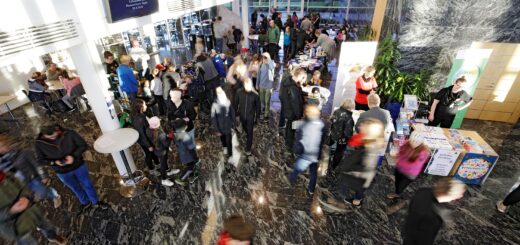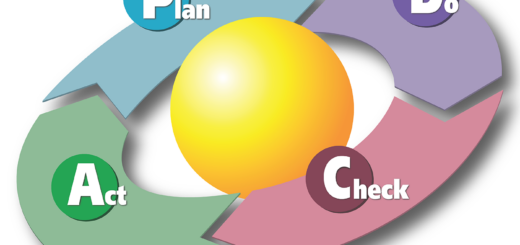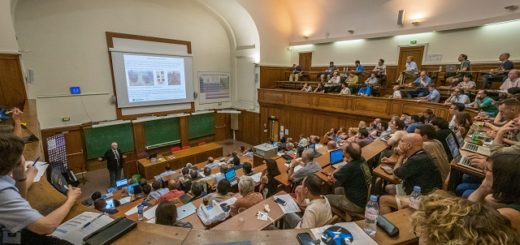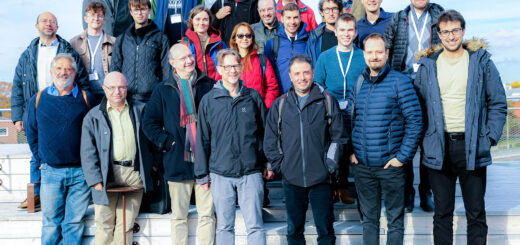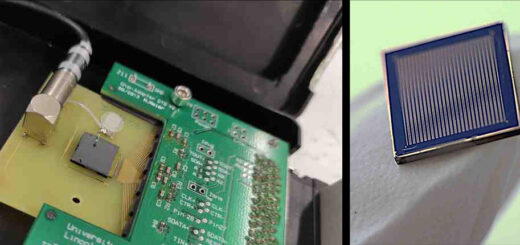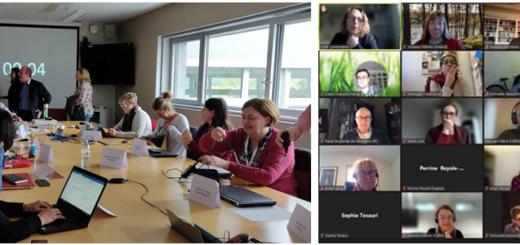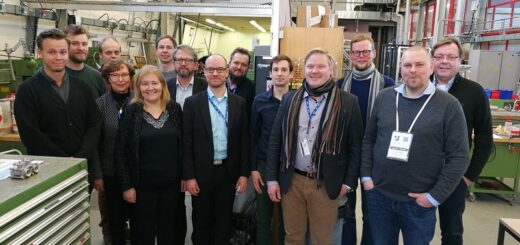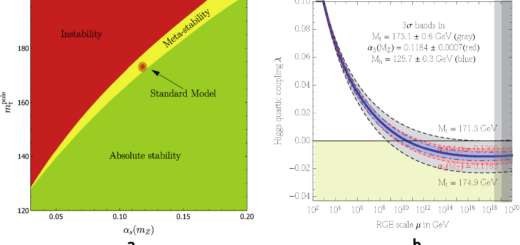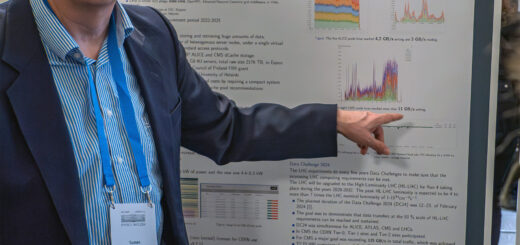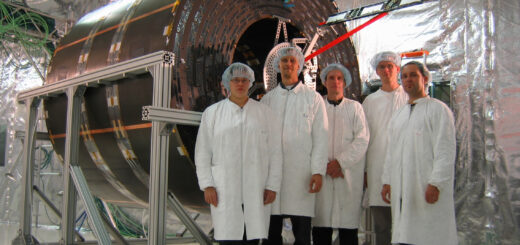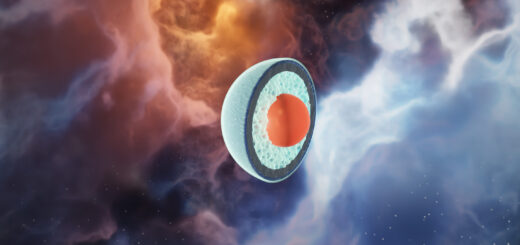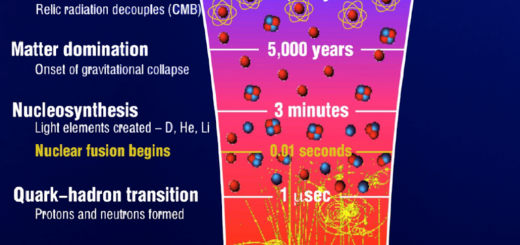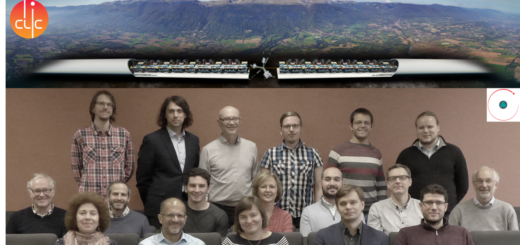Looking inside spent nuclear fuel

July 2019. After a hasty breakfast, scientists from STUK, IAEA and HIP (i.e. me), and a few observers from the European Commission, leave their hotels in Rauma at 6:30 to meet up at the Olkiluoto nuclear power plant at 7:00. After changing into white coveralls and shoes, with hard hat, safety glasses and dosimeters in place, we enter the spent fuel storage by 7:30. While Finland is in holiday mode, we early risers are testing novel instruments to look inside spent nuclear fuel.
Two measurement devices, one installed on top of the other, were lowered into the 15-meter deep pool on the first day of the 1-week measurement campaign. No air bubbles rose from inside the instruments during the lowering, a promising start. Measurements on fuel assemblies started on the 2nd day and continued uninterrupted for the rest of the week. Mind you, not around the clock as accelerator-based experiments: we were “kicked out” of the spent fuel storage by 16:00 every day. This provided plenty of time to discuss the results over dinner in sunny and hot Rauma.
Both neutrons and gamma rays were measured to provide a view of the inside of the spent fuel assembly. The Passive Gamma Emission Tomography (PGET) instrument[1,2] performs tomography using the gamma rays emitted in the radioactive decay of fission products. The most intense of these is the gamma ray from Cs-137. PGET provides two-dimensional cross-sectional images of the spent fuel, with the purpose of checking whether all fuel is in place as declared by the power plant operator. Additionally, the PGET instrument measures the total number of neutrons emitted, a signal also used to verify the operator’s declaration. The Passive Neutron Albedo Reactivity (PNAR) instrument measures neutron multiplication and thus the presence of fissile material inside an assembly[3,4].
Both devices are being developed in the context of nuclear safeguards, the international effort to deter the proliferation of nuclear weapons. Various technical measures are used to verify the declarations made by the signatories to the Treaty on the Non-Proliferation of Nuclear Weapons about their nuclear material and activities.
Since the 1980s, IAEA has developed PGET, in collaboration with some of its Member States including Finland[5]. HIP got involved in this work in 2015 as part of the FiDiPro NINS3 (Novel instrumentation for Nuclear Safety, Security and Safeguards) project. At the end of 2017, IAEA approved the PGET device for inspections. This however did not mean that the development of the device was over. The most urgent need was the development of novel tomographic image reconstruction and image analysis algorithms. With this in mind, a collaboration between HIP and the Department of Mathematics and Statistics of the University of Helsinki was initiated in early 2018. Most of the developing work was performed by MSc student Rasmus Backholm. Rasmus submitted the results to the IAEA Tomography reconstruction and analysis challenge, winning 2nd prize (challenge.iaea.org/news) !
The development of the PNAR device, the first operational one in the world, was initiated by STUK. The NINS3 project was heavily involved in the design by means of Monte Carlo simulations, while the HIP Detector Lab assisted in the construction of the prototype device that was tested successfully last July at Olkiluoto.
Both the PGET and PNAR instruments performed very well, gathering data on different types of spent fuel assemblies with varying properties. We’re all looking forward to the first results of the PNAR device, to see how closely the simulations resemble reality. The new PGET data, combined with measurements from 2017 and 2018, now form a comprehensive data set for the further development and optimization of image reconstruction and analysis algorithms. HIP is continuing the development of the PGET and PNAR methods in a collaboration with STUK. Over the next few years, this capability to look inside spent nuclear fuel will be implemented in the context of the geologic repository of spent nuclear fuel being completed at Olkiluoto (www.posiva.fi). And now and again, new measurement campaigns at spent fuel storage facilities will be organised.


Peter Dendooven
[1] T.White, M. Mayorov, A. Lebrun, P. Peura, T. Honkamaa, J. Dahlberg, J. Keubler, V. Ivanov, A. Turunen, Application of passive gamma emission tomography (PGET) for the verication of spent nuclear fuel, in Proc. INMM 59th Annu. Meeting, Baltimore, MD, USA, 2018.
[2] C. Bélanger-Champagne, P. Peura, P. Eerola, T. Honkamaa, T. White, M. Mayorov, P. Dendooven, Effect of gamma-ray energy on image quality in passive gamma emission tomography of spent nuclear fuel, IEEE Trans. Nucl. Sci., 66 (2019), 487-496. doi.org/10.1109/TNS.2018.2881138
[3] S.J. Tobin, P. Peura, C. Bélanger-Champagne, M. Moring, P. Dendooven, T. Honkamaa, Utility of including Passive Neutron Albedo Reactivity in an Integrated NDA system for encapsulation safeguards, ESARDA Bulletin 56 (2018) 12-18. https://esarda.jrc.ec.europa.eu/images/Bulletin/Files/B_2018_056.pdf
[4] S.J. Tobin, P. Peura, C. Bélanger- Champagne, , M. Moring, P. Dendooven, T. Honkamaa, Measuring spent fuel assembly multiplication in borated water with a Passive Neutron Albedo Reactivity instrument, Nucl. Inst. Meth. Phys. Res., A 897 (2018) 32-37. https://doi.org/10.1016/j.nima.2018.04.044
[5] T. Honkamaa, F. Levai, A. Turunen, R. Berndt, S. Vaccaro, P. Schwalbach, A Prototype for passive gamma emission tomography, IAEA Safeguards Symposium (2014)
https://www.researchgate.net/profile/Stefano_Vaccaro/publication/271703328_A_Prototype_for_Passive_Gamma_Emission_Tomography/links/55c4711408aea2d9bdc1e6fa/A-Prototype-for-Passive-Gamma-Emission-Tomography.pdf


